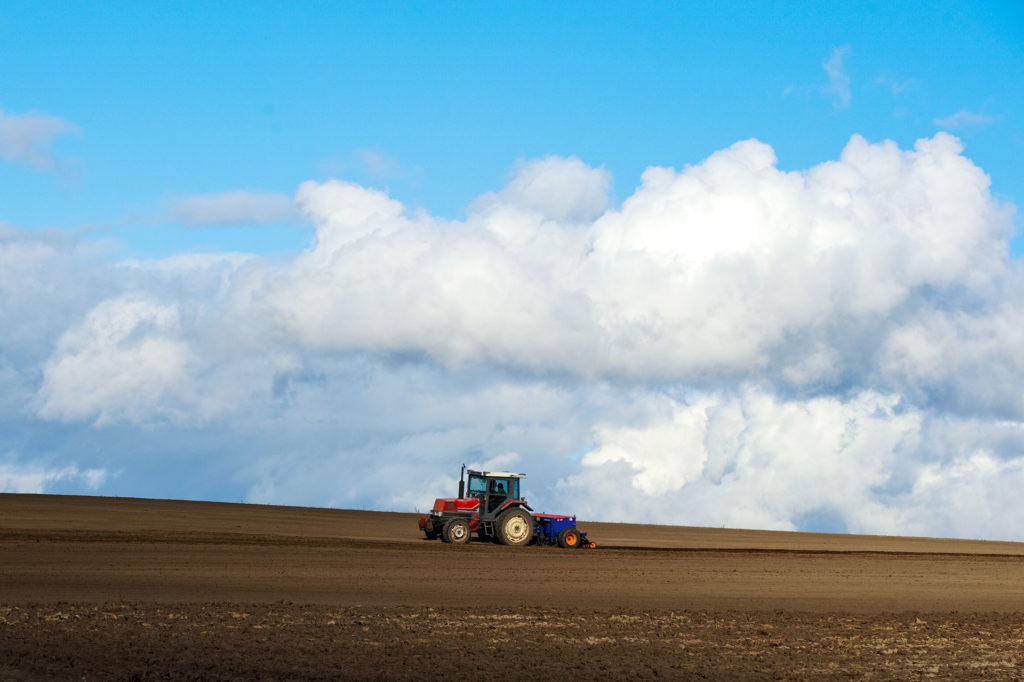ONION
Onions made in Kitami, Japanese No.1 output
冬の畑の楽しみ方ツアー
ONION
Onions made in Kitami, Japanese No.1 output
The appropriate cool weather and the feelings to consumers
The characteristics of Kitami area are these; one is that the precipitation is less than other areas in Japan and hours of daylight are longer. The other is that there is a big gap of temperature between day and night. The onions grown in such an environment are firm, and you can taste sweetness in strong bitter taste when you cook them. In February, snow starts to accumulate on the ground and the onion seeds are sown inside the plastic greenhouses. Then planting to the fields begins in late April when snow melt away and the ground shows up. After that, onions go through the processes such as cutting the roots, harvesting and drying, and finally come to the tables. We constantly ship these onions to keep this way of production and receive the reputation of Japanese No.1 output of onions thanks to the characteristics of Kitami area.
The appropriate cool weather and the feelings to consumers

The characteristics of Kitami area are these; one is that the precipitation is less than other areas in Japan and hours of daylight are longer. The other is that there is a big gap of temperature between day and night. The onions grown in such an environment are firm, and you can taste sweetness in strong bitter taste when you cook them. In February, snow starts to accumulate on the ground and the onion seeds are sown inside the plastic greenhouses. Then planting to the fields begins in late April when snow melt away and the ground shows up. After that, onions go through the processes such as cutting the roots, harvesting and drying, and finally come to the tables. We constantly ship these onions to keep this way of production and receive the reputation of Japanese No.1 output of onions thanks to the characteristics of Kitami area.
The cultivation of onions has started since 100 years ago
Now Kitami has the best output of onions in Japan. Onions are necessary for curry and other dishes. In 2016, the amount of shipment was about 1,110,000 tons and the 70% came from Hokkaido. Moreover, Kitami grew and shipped about 240,000 tons, which was the No.1 output. Onions had been grown in Sapporo at the beginning of Meiji Era, and they came to Kitami in 1917. After the World War II, cultivation of onions spread to the whole Kitami replacing cultivation of mint because the cool weather matches onions. That is why Kitami has become the best productive area of onions in Japan now.
The cultivation of onions has started since 100 years ago

Now Kitami has the best output of onions in Japan. Onions are necessary for curry and other dishes. In 2016, the amount of shipment was about 1,110,000 tons and the 70% came from Hokkaido. Moreover, Kitami grew and shipped about 240,000 tons, which was the No.1 output. Onions had been grown in Sapporo at the beginning of Meiji Era, and they came to Kitami in 1917. After the World War II, cultivation of onions spread to the whole Kitami replacing cultivation of mint because the cool weather matches onions. That is why Kitami has become the best productive area of onions in Japan now.
Scenery of Kitami, each season
In spring, straight ridges with seedlings appear in the fields in Kitami, and onions grow in plump in summer. The big containers with blue and orange tents show up in fall. The scenery of onion fields in each season seen from Route 39 symbolizes scenery of Kitami.
Scenery of Kitami, each season

In spring, straight ridges with seedlings appear in the fields in Kitami, and onions grow in plump in summer. The big containers with blue and orange tents show up in fall. The scenery of onion fields in each season seen from Route 39 symbolizes scenery of Kitami.